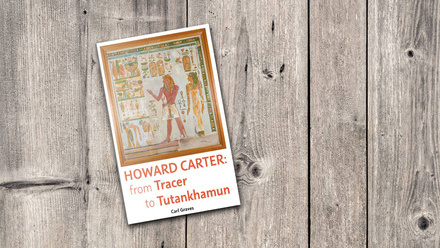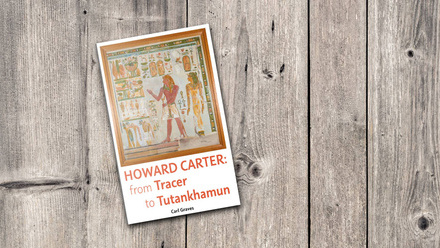EES Members on tour, 2022
From 3-14 October 2022 the Egypt Exploration Society and Ancient World Tours guided 22 members from Luxor to Cairo taking in various sites along the way. The tour focused on the life and legacy of Howard Carter before and after the discovery of the tomb of Tutankhamun in 1922.
The group started at Luxor, visiting the (soon to be re-opened) home of Howard Carter from 1910 to 1939 at Elwat el-Diban (Place of the Flies). While there they visited the facsimile of Tutankhamun’s tomb created by Factum Arte in 2013. The highlight of this stop was visiting the mortuary temple of Hatshepsut at Deir el-Bahari where Carter worked, for the Egypt Exploration Fund, from 1893 until 1899. Here, Carter was employed as an artist to record the painted decoration preserved in the temple, as well as photographer. He was also entrusted with the task of reconstructing the temple from the fragments excavated. A plaque, commemorating the work of the EEF, can be found at the temple on the north side of the ramp leading to the upper terraces.
As well as following in the footsteps of Howard Carter, the group were able to visit the tombs of those that were instrumental during the reign of Tutankhamun too. Many of these tombs would have been known to Howard Carter during his employment by the Egyptian Antiquities Service from 1899 until 1904 as Chief Inspector. One particular highlight was to see the tomb of Amenhotep called Huy (TT40), King’s Son of Kush during Tutankhamun’s reign.
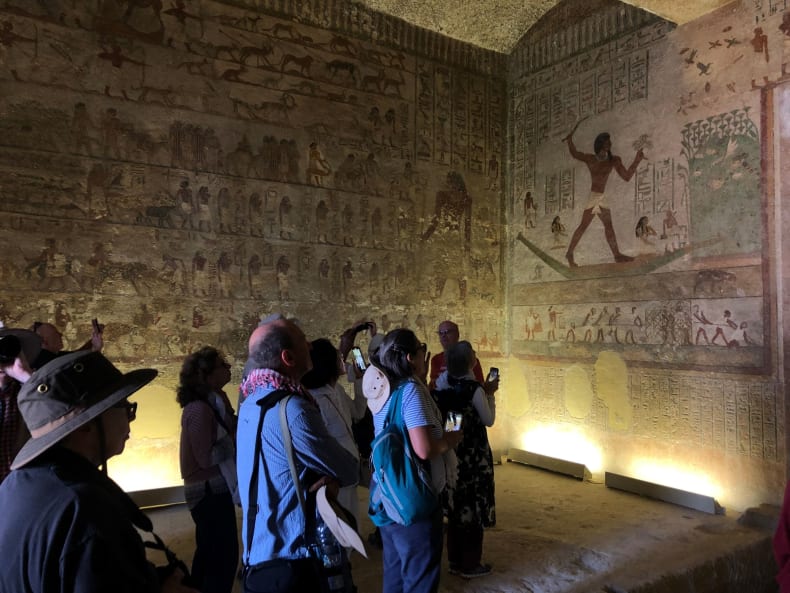
Inside the tomb of Khnumhotep II at Beni Hasan. It was here that a 17-year-old Howard Carter was first employed by the Egypt Exploration Fund in 1891.
A visit to the Valley of the Kings was, of course, necessary to begin our journey back through Carter’s career. As well as the tomb of Tutankhamun itself, the group were given special permission to enter the tomb of Tuthmosis IV (KV43). Here, in 1903, Howard Carter discovered the lost tomb on behalf of Theodore Davis. Though the tomb had been plundered and the king’s body removed to the Royal Cache in antiquity, Carter did find broken fragments of the funerary goods including a magnificent chariot body now on display in the National Museum of Egyptian Civilisation (NMEC). This discovery gave Carter the knowledge of what an intact burial might have contained – something he was to realise less than twenty years later.
The tour demonstrated that, though Carter is remembered for Tutankhamun, he is often forgotten for his contributions to the field of epigraphy. His legacy in using art to accurately record the decoration found in temples and tombs is most admirably seen in the work of Amice Calverley and Myrtle Broome at the temple of Seti I at Abydos. Comparing their work, published in four huge folio volumes by the EES and Oriental Institute Chicago, against the decoration today, the group were able to see the value of careful recording and conservation – work that continues today!
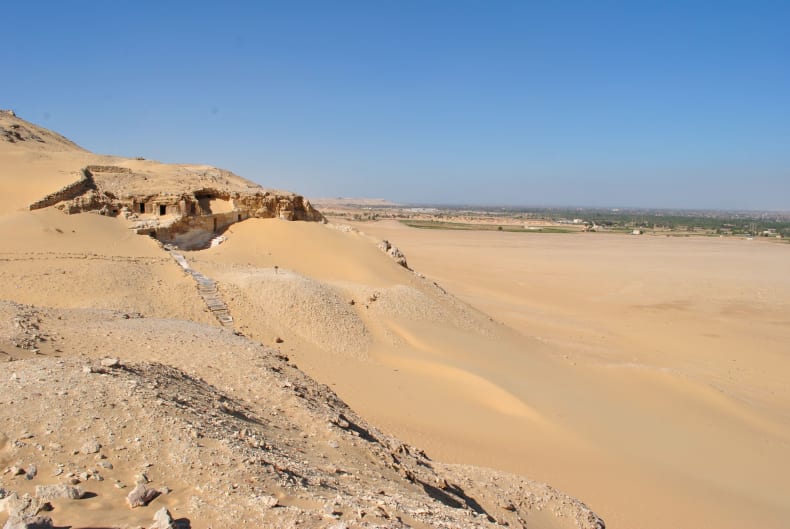
The site of Meir where Carter and Lord Carnarvon spent one season (1918) working. The EES spent from 1912 to 1950 recording the scenes in the tombs under the direction of Aylward Blackman for the Archaeological Survey of Egypt.
The group spent three days in Middle Egypt, the place that Howard Carter was first introduced to Egyptology. It was here, at the site of Beni Hasan, that Carter first worked in Egypt at the age of just 17 for the EEF. The tomb scenes he recorded are still well preserved and we were able to see the tomb that he lived in during his brief first season. Amarna, where Tutankhamun was born and raised, was also where Carter received his first training in archaeology, under William Matthew Flinders Petrie, in 1892. Carter would later write to Francis Llewellyn Griffith, ‘Please remember that I am an artist & cannot see what way digging for antiquities should advance me in my future career’ (EES.COR.06.b.17-1, 1893). An interesting comment when viewed with hindsight. At Amarna the group were able to visit the old EES dig house dating to the 1930s, as well as the site of Carter’s training at the Great Aten Temple. Here, Prof Barry Kemp joined the group to talk about the latest work of the Amarna Project in this area.
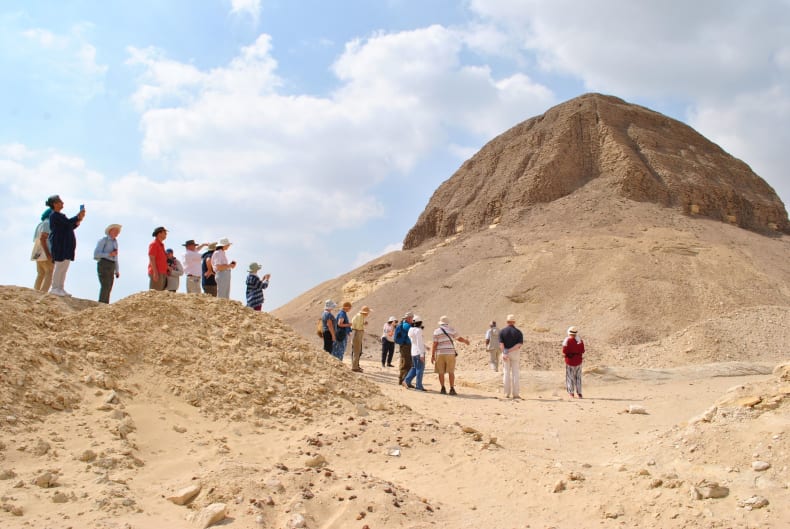
The group were able to visit the newly opened pyramid of Lahun and the burial chamber of Senwosret II on their way to Hawara, a site that Carter and Lord Carnarvon tried to obtain permission to excavate before they were offered the Valley of the Kings!
Once the group arrived in Cairo, we visited Saqqara, the site of the (in)famous incident that ended Carter’s career in the Antiquities Service in 1905. Of course, had this affair not occurred, history would, perhaps, be very different and the group had time to reflect on this moment. A relaxing final day of the tour took the group to Lahun and Hawara before enjoying lunch by the banks of Birket Qarun at the Helnan Auberge Faiyum.
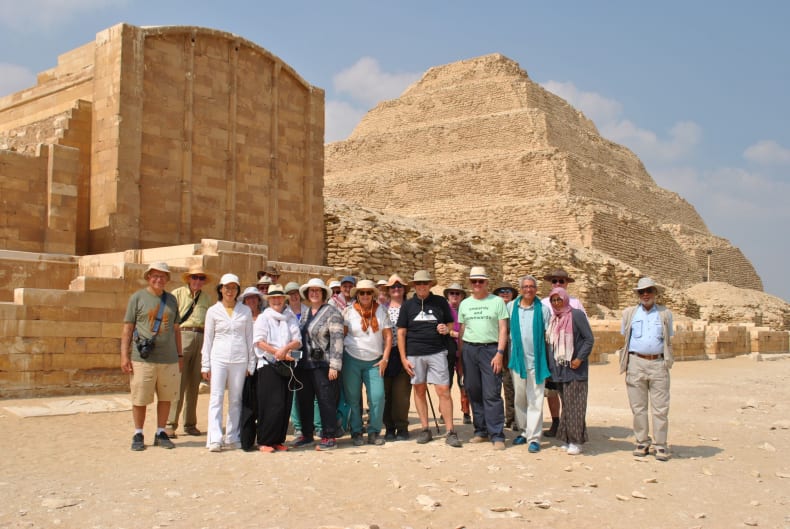
The full group at Saqqara in front of the Step Pyramid of Djoser.
The Society was very pleased to work with Ancient World Tours to make this visit possible and would like to thank all those that joined Dr Carl Graves (Director of the EES) on this trip. Creating opportunities for cultural and intellectual exchange is crucial for our shared understanding of Egypt’s past, present, and future and remains the aim of these trips. We look forward to offering more soon and seeing more EES members there!

